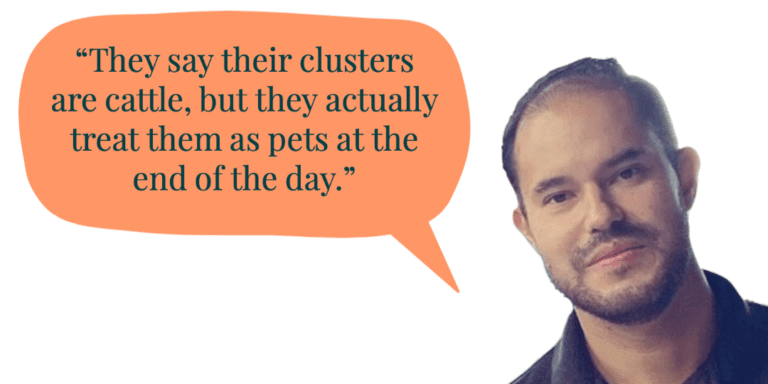On December 9th, 2020, I had the pleasure of speaking with two great minds on simplifying storage in Kubernetes. Alex Chircop is the Founder and CEO at StorageOS (https://storageos.com), and Bruno Andrade is the Founder and CEO at Shipa (https://www.shipa.io). The full recording of this discussion is below. Here is a summary of what we discussed:
Simplify Deploying and Operating Stateful Application
All applications are stateful in some form, in the sense that all applications need to store state somewhere, whether it’s in a database or message queue, or just files or an object store, for example. The reality is that as applications become portable, more and more organizations are looking to Kubernetes as the leading orchestrator. The challenge has always been, what do you need to do when it comes to storage? What is the key to simplifying storage in Kubernetes? A cloud-native storage environment, such as StorageOS, can provide developers that declarative and composable way of defining their storage and the attributes that their storage needs.
Everything has become very dynamic in cloud computing, and traditional system storage concepts don’t necessarily apply. Newer concepts tend to bring new complexity from a developer perspective, and it is important to minimize these complexities so that the development team is not burdened with managing infrastructure. The benefits of having a declarative format that applies to every layer of the infrastructure effectively mean that now the developer is in control of the attributes for their application, and it means that they can deploy their application in the same way they always have.

Managing Storage
Learn how Shipa can help you facilitate the adoption and usage of persistent storage on Kubernetes
Storage Challenges
There is a scale of the data plane, which is more of a traditional “speeds and feeds” kind of discussion where we’re talking about IOPS and megabytes per second. But then there’s also the speed of the control plane. This is really important because in a Kubernetes environment, apart from the cluster’s dynamic structure, in terms of nodes and scaling, you also have the concept of volumes coming and going much more dynamically.
StorageOS provides a disaggregated consensus concept in the control plane. Every volume effectively has its own mini-brain and can manage placement decisions and failover decisions independently, so you don’t get a serialization. And this allows lots of activity to happen at the same time. Alex shares a quick demo of this in the video.

Portability Still
As people get more and more comfortable with Kubernetes, cloud-native apps, and microservices, one tendency is that they’re scaling across multiple clusters. These multiple clusters can be on-premises or in the cloud and hybrid environments. Moving between environments, changing cluster versions, etc., brings an entirely new set of complexity.
Shipa enables the concept of volume plans. Volume plans are directly attached to your storage class. With a higher level integration into StorageOS, you can easily bind your storage to the application, regardless of the cluster you are using. Bruno shares a quick demo of this in the video.
Check out the full video for more details, and follow these links for additional documentation:
Share on twitter
Twitter
Share on linkedin
LinkedIn
Share on email
Email

